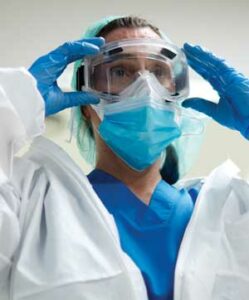New Standard Closes Gap In Eyewear Protection
According to the U.S. Centers for Disease Control and Prevention, about 2000 U.S. workers sustaina job-related eye injury each day that requires medical treatment.

According to the U.S. Centers for Disease Control and Prevention, about 2000 U.S. workers sustain a job-related eye injury each day that requires medical treatment. This includes oral health professionals, who are subject to spatter, aerosols and debris generated during routine dental procedures. After suffering an eye injury from amalgam debris during restorative care, Peter Arsenault, DMD, a professor and division head of operative dentistry in the Department of Comprehensive Care at Tufts University School of Dental Medicine, began researching more effective means of eye protection. His research and advocacy helped bring about a new federal standard for eye and face protection from healthcare-related exposures.
Adopted under the auspices of the American National Standards Institute (ANSI) and International Safety Equipment Association (ISEA), ANSI/ISEA Z87.62-2021 is the first federal guidance to standardize eye and face protection against bloodborne pathogens and debris. The guidance largely stems from Arsenault’s data. Together with an engineer colleague, Arsenault studied the space between safety glasses and other eye protection devices and the user’s cheek — otherwise known as the bottom gap — that can allow blood, debris, and other potentially infectious material to bypass the eyewear. These efforts led to the development of a new standard that requires employers to provide eye protection that obstructs the bottom gap, either through specially designed masks, face shields or other means.
The guidance applies to clinical employees of any kind, including healthcare providers, clinical researchers, veterinary teams and first responders. As a first iteration, ISEA notes the initial standard is not all-encompassing of every biological hazard. For example, the test criteria specifically do not assess aerosolized pathogens — though officials suggest aerosol exposure may be considered in subsequent versions.
From Decisions in Dentistry. November 2021;7(11):6.


